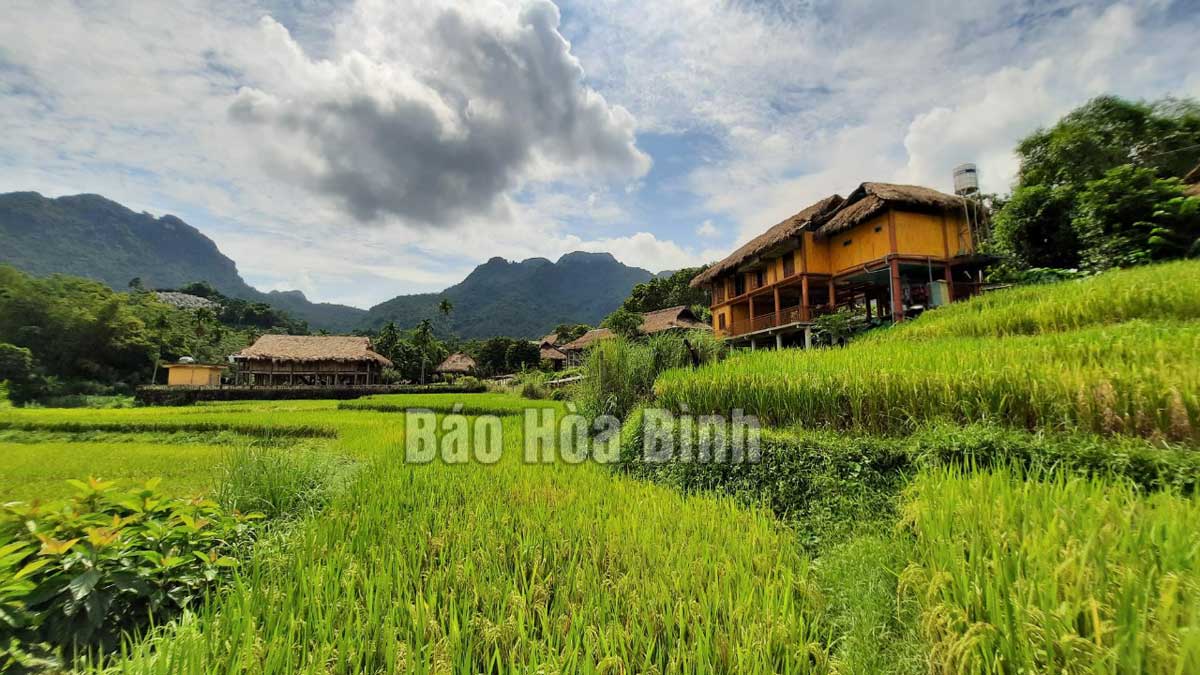


Mo hamlet is a peaceful place basked in autumn sunshine. It is a perfect picture of stilt houses amidst forest and expansive mountains, with chirping birds and gentle flowing streams. Local people lead a simple and peaceful life and value sincerity.

Mo hamlet in Binh Thanh commune (Cao Phong district) with traditional stilt houses and pristine landscape, which is a draw to visitors.
The hamlet is 12km away from downtown Hoa Binh city. Housing over 100 stilt houses of Muong people, it keeps local cultural traits intact, from the house shape to daily activities.
It is attractive to foreign tourists and students as they can explore and enjoy the pure atmosphere and beautiful landscapes to ease fatigue and worries in life.
Nguyen Thi My, who was among the first ones in the hamlet to engage in tourism activities, said local people earn their living mostly from rice cultivation, tree growing and animal husbandry. In traditional stilt houses, they still keep a traditional daily life, with many home and working tools made of wood and bamboo, such as weaving looms, bows and farming tools. Of note, women of Muong group excel in weaving and making cushions. They often create handmade traditional craft products to introduce to tourists.
Visitors will be warmly welcome by locals either on the road or at any stilt houses. They can explore Muong culture through listening to stories of the hosts. During overnight trips, tourists will be treated with local specialties of banana wine, corn wine and dishes like sticky rice, fish, pork, as well as songs and dances of Muong people if they are interested, to learn about local culture and custom.
Bui Yen Minh, tourism officer of the culture-sports office of Cao Phong district said that community-based tourism in Muong Giang Mo village attracts tourists as it successfully conserves outstanding traditional traits of Muong culture. Together with pristine landscapes, the village has become a can’t-miss destination in the journey to discover and explore the Hoa Binh reservoir tourist site./.